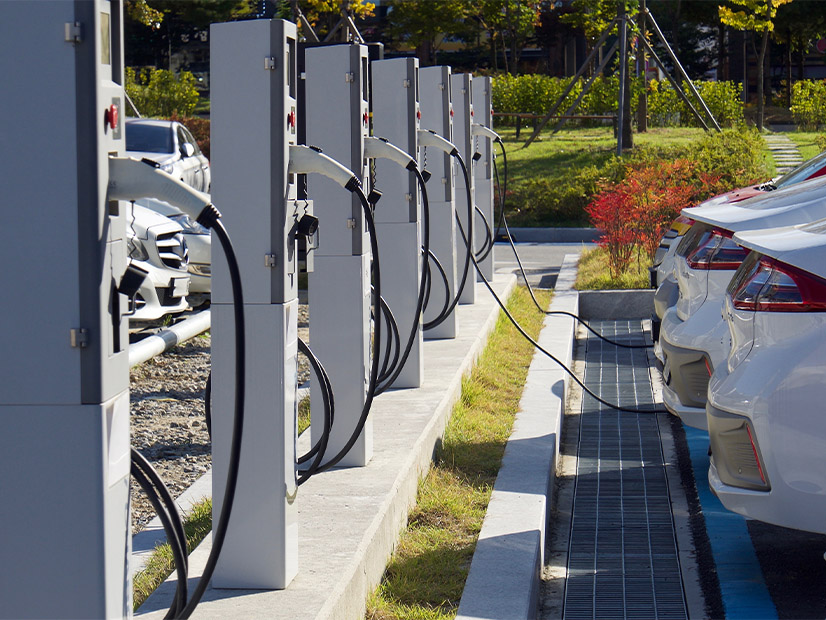NERC’s Reliability and Security Technical Committee (RSTC) hopes to approve the formation of a task force examining the impact of electric vehicles on grid reliability by the end of this week, ERO staff said.
Speaking to the System Planning Impacts of Distributed Energy Resources (SPIDER) Working Group on July 31, JP Skeath, NERC senior engineer for bulk power system security and grid transformation, said the RSTC is holding an electronic vote to allow the task force to begin work before the committee’s next formal meeting, which is not scheduled until September.
Skeath said RSTC Secretary Stephen Crutchfield told him that day the online vote, which ends on Aug. 2, had yet to reach a quorum. However, he said the 17 votes in favor received so far made staff “assume the vote is going to be” successful. If so, Skeath continued, the committee will start forming the task force right away, with recruitment targeting EV manufacturers among other stakeholders.
The EV task force would report directly to the RSTC rather than to any of its subcommittees or working groups, Skeath said. However, he added that “part of the expected scope is to be able to characterize specific types of risks and potentially reassign future work … a year or so” after work begins. The task force may tap specific groups to study further mitigation of the risks identified.
ERO stakeholders have become increasingly concerned about the impact of EVs on the grid, with their rate of adoption in North America rising significantly over the past several years. According to data collected by the California Energy Commission last year — which Skeath shared in his presentation — cumulative national EV sales since 2010 reached more than 3.25 million in the last quarter of 2022, with nearly 250,000 of those sales occurring in just that quarter.
“We’re starting to see the exponential [growth] part … of that type of adoption curve,” Skeath said. “The cumulative and instant sales are just growing in the last few years, where EVs are starting to become a … larger market share in … light-duty vehicles.”
The growing EV deployment also has led to expanding loads for grid planners to deal with, he continued. In a 2022 analysis, National Grid examined current EV charging sites, including locations like parking garages with one or two chargers, mixed-use retail sites and large locations like truck stops.
While most of the sites analyzed accounted for less than 5 MW of load in 2022, National Grid projected that by 2045, a smaller site could require 10 MW to 20 MW — between an outdoor stadium and a small town — while the largest locations could exceed 40 MW, the same as a large industrial plant.
“That started the idea of [asking] what type of load will be friendly to the rest of the grid, and what type of load will be unfriendly to the rest of the grid?” Skeath said.
The ERO has contributed to several previous studies on EVs’ grid reliability impacts. In April 2023, NERC, WECC and the California Mobility Center released a report identifying “grid-friendly” and “grid-unfriendly” behavior — meaning, respectively, electric applications that support stable operation of the grid, and those that aim to maintain a constant current or power level despite the effect it might have on a weakened system. (See NERC, WECC Outline EV Charging Reliability Impacts.)
NERC built on 2023’s study with a 2024 white paper recommending EV and charger manufacturers improve their collaboration with electric utilities and that transmission planners incorporate charger performance into their planning criteria. (See NERC Addresses Growing EV Risks in White Paper.)




